#no code application development
Explore tagged Tumblr posts
Text
Application Development Services based on Low-Code/No-Code - Atharva system
Combining low code no code application development platforms with hand coding gives you full control while developing in Atharva System. Our solutions provide tailored solutions that drive efficiency and innovation and cater to every industry's unique needs.
#low code development platforms#low code platforms#low code no code#no code application development#low code development#low code app platforms#low code platform development#low code application development#low code app development#no code development platforms#low code application development platforms#low code software#low code no code development services company#low code no code development services#low code no code development company
0 notes
Text
February 6, 2024 • Tuesday
I'm a beginner in app development, and I created this trashy notes app :) the colors are jarring because I was focusing more on functionality than appearance. This is pretty good for a beginner level ig?
#dailyfoxposts#codeblr#coding#foxcodes#android app development#app development#app dev#project#app dev project#computer science#computer applications#coding journey
56 notes
·
View notes
Text
Future-Proofing Your Business with the Right Low-Code Platform
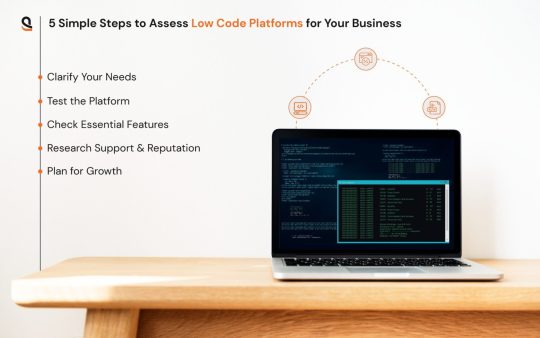
Businesses today need to move fast to stay competitive. Traditional software development takes time, money, and skilled developers—resources that many companies can’t afford to waste. That’s where low-code platforms come in. They make it easier to build apps, automate processes, and innovate without the need for complex coding.
What is a Low-Code Platform?
A low-code platform is a development tool that allows users to create applications using a simple drag-and-drop interface instead of writing thousands of lines of code. It empowers businesses to build apps quickly, integrate with existing systems, and improve efficiency with minimal technical expertise. This means faster innovation, lower costs, and better collaboration between teams.
Why Low-Code is a Game-Changer for Businesses
Businesses across industries are turning to low-code platforms to streamline operations and improve productivity. Here’s why:
Faster Development: Build applications in days or weeks instead of months.
Cost Savings: Reduce dependency on expensive development teams.
User-Friendly: Even non-developers can contribute to building and automating workflows.
Easy Integrations: Seamlessly connect with databases, APIs, and business tools.
Scalable Solutions: Whether you’re a startup or enterprise, low-code platforms grow with your needs.
Boosts Innovation: Enables rapid prototyping and real-time modifications.
Mobile-Optimized: Many platforms come with built-in mobile support for better accessibility.
What to Look for in a Low-Code Platform
With so many options available, how do you choose the best low-code platform? Consider these factors:
Ease of Use: Look for a simple, intuitive interface.
Customization: Ensure the platform can be tailored to your unique needs.
Security: Strong data protection and compliance with industry standards.
Automation Capabilities: Reduce manual tasks and improve efficiency.
Collaboration Tools: Multiple team members should be able to work together effortlessly.
AI & Machine Learning Features: Some platforms come with AI-powered analytics and automation.
Pre-Built Templates: Accelerate development with ready-made components.
How Different Industries Are Using Low-Code
From healthcare to finance, low-code platforms are making a big impact. Here are some real-world applications:
Healthcare: Automating patient record management and appointment scheduling.
Finance: Developing AI-driven chatbots and fraud detection systems.
E-commerce: Personalizing shopping experiences and streamlining inventory management.
Manufacturing: Optimizing supply chain tracking and predictive maintenance.
Education: Creating e-learning portals and online student management systems.
Real Estate: Simplifying lease tracking, tenant communication, and digital contracts.
The Future is Low-Code
The demand for low-code platforms is growing rapidly as businesses realize the power of faster, smarter, and more affordable software development. Whether you’re a small business looking to optimize operations or a large company aiming for digital transformation, low-code can give you the competitive edge you need.
Take the Next Step
Curious to see how low-code can revolutionize your business?
👉 Read the Full Blog Now to explore the best low-code platforms and find the right one for you.
The future is low-code—don’t wait to embrace it!
1 note
·
View note
Text
Working on putting together a music server application for my personal use (basically, you have your music storage on a local server, and you can access it via a music application from any device on your network, essentially -- Plex if it didn't suck ass for music), and I'm pretty heavily considering whether this might be a good fit for kickstarter...
#the code will be open source one way or another#do people other than me want this lol#(kickstarter would mean i could develop more device-specific applications -- currently i'm focusing on a web app)#talking tag
2 notes
·
View notes
Text
A Comprehensive Guide to Mobile App Design in 2024
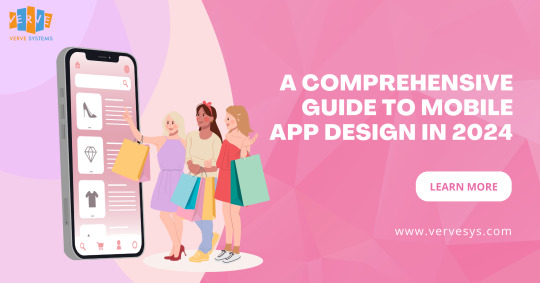
Table Of Contents
Introduction
What is Mobile App Design?
Importance of Creating a Custom Design
Latest Trends in Mobile App UI Design in 2024
Steps to Build the Most Effective App UI Design Process
How Can Verve Systems Help You with Mobile App Design?
Introduction
Mobile app design is a critical aspect of creating a successful and engaging digital product. As the mobile landscape evolves, it’s crucial for businesses and developers to stay abreast of the latest trends and design principles to deliver exceptional user experiences. In this comprehensive guide, we’ll explore the fundamental concepts of mobile app design, emphasize the importance of creating custom designs, delve into the latest trends in mobile app UI design in 2024, outline the steps to build the most effective app UI design process, and discuss how Verve Systems can assist you with your mobile app design endeavors.
What is Mobile App Design?
Mobile app design involves creating a visual and interactive interface for applications that run on mobile devices. It encompasses not only the aesthetics but also the functionality and user experience (UX). A well-designed mobile app considers user preferences, navigation, and the overall journey from the moment a user launches the app until they complete their desired actions.
Importance of Creating a Custom Design
1. Brand Identity:
A custom app design reflects and reinforces your brand identity. Consistent branding across your digital products helps in building brand recognition and trust among users.
2. User Engagement:
Tailoring the design to your specific audience enhances user engagement. A custom design allows for a user-centric approach, addressing the unique needs and preferences of your target demographic.
3. Competitive Edge:
In a crowded app market, a unique and aesthetically pleasing design can give your app a competitive edge. Users are more likely to choose an app that not only meets their functional needs but also provides an enjoyable and visually appealing experience.
4. Adaptability:
Custom designs can be adapted to the specific requirements of your app, ensuring that the user interface aligns seamlessly with the app’s functionality and purpose. This adaptability is crucial for creating a cohesive and intuitive user experience.
Latest Trends in Mobile App UI Design in 2024
As we step into 2024, several trends are shaping the landscape of mobile app UI design. Staying informed about these trends can help designers and developers create apps that feel modern and relevant:
1. Dark Mode Dominance:
Dark mode has become more than just a trend; it’s now a staple in UI design. Users appreciate the reduced eye strain and enhanced visual aesthetics offered by dark mode interfaces.
2. Microinteractions:
Microinteractions, such as animated buttons and subtle transitions, provide feedback to users, making the app feel responsive and interactive. These small design elements contribute to a more engaging user experience.
3. Immersive 3D Elements:
Leveraging 3D elements in mobile app design adds a layer of realism and immersion. Whether it’s interactive 3D models or depth-enhancing effects, these elements create visually stunning experiences.
4. Neumorphism:
Neumorphism is a design trend that combines elements of skeuomorphism and flat design. It involves using subtle shadows and highlights to create a soft, tactile appearance, giving apps a modern and futuristic feel.
5. Gesture-Based Navigation:
With the rise of edge-to-edge screens, gesture-based navigation is gaining prominence. Apps are increasingly adopting intuitive gestures for actions like swiping, pinching, and tapping, enhancing the overall navigation experience.
Steps to Build the Most Effective App UI Design Process
Creating an effective app UI design process requires careful planning and execution. Here are the key steps to ensure a successful outcome:
1. Define Clear Objectives:
Begin by clearly defining the objectives of your mobile app. Understand the target audience, the app’s purpose, and the desired user journey. This foundation will guide the entire design process.
2. Research and User Persona Development:
Conduct thorough research on your target audience. Develop user personas to understand their needs, preferences, and pain points. This information will inform design decisions that resonate with your users.
3. Wireframing and Prototyping:
Create wireframes to outline the basic structure and layout of your app. Progress to prototyping to visualize the flow and interactions. Prototypes provide a tangible representation of the user experience.
4. Iterative Design Process:
Adopt an iterative approach to design. Gather feedback at each stage, make improvements, and refine the design. This cyclical process ensures that the final product aligns closely with user expectations.
5. Responsive Design for Multiple Platforms:
Consider the diversity of devices and screen sizes. Implement responsive design principles to ensure a seamless and consistent experience across various platforms, be it smartphones, tablets, or wearables.
6. Testing and User Feedback:
Conduct thorough testing of the app’s design, functionality, and performance. Seek feedback from real users through beta testing and make necessary adjustments based on their insights.
7. Implementation and Development Collaboration:
Collaborate closely with developers during the implementation phase. A seamless partnership between designers and developers ensures that the envisioned design is translated into a functional and aesthetically pleasing app.
8. Continuous Improvement:
Post-launch, monitor user interactions and gather analytics. Use this data for continuous improvement, addressing any issues, and incorporating user feedback into future updates.
How Can Verve Systems Help You with Mobile App Design?
Verve Systems is a leading provider of comprehensive mobile app design services, offering expertise in creating tailored and innovative designs. Our team of skilled designers and developers collaborates with clients to deliver solutions that align with their brand identity and user needs.
Our Services Include:
Custom App Design:
We specialize in creating custom designs that reflect your brand and provide a unique user experience.
User-Centric Approach:
Our designs are crafted with a focus on user preferences and behavior, ensuring high levels of engagement.
Incorporating Latest Trends:
Stay ahead in the competitive landscape by leveraging the latest trends in mobile app design, keeping your app modern and appealing.
Collaborative Development:
We work closely with your development team to seamlessly integrate the design into the app development process.
Continuous Support and Improvement:
Our commitment extends beyond the initial design, with continuous support and a dedication to refining the app based on user feedback and evolving industry trends.
In conclusion, mobile app design plays a pivotal role in the success of any digital product. By understanding the fundamentals, staying updated on trends, following a robust design process, and partnering with experienced teams like Verve Systems, you can create mobile apps that not only meet user expectations but also stand out in the competitive app market.
Explore More — https://www.vervesys.com/ Contact Us — +1 (732) 402–6854, +91 79 4000 7881 Enquire Now — [email protected]
#mobile app development company india#mobile app design#mobile app development#mobileapp#web development#coding#business#mobile application development#ios app development#android app development#app developers#mobile app developers#mobile app design bd#mobile app developer company
6 notes
·
View notes
Text
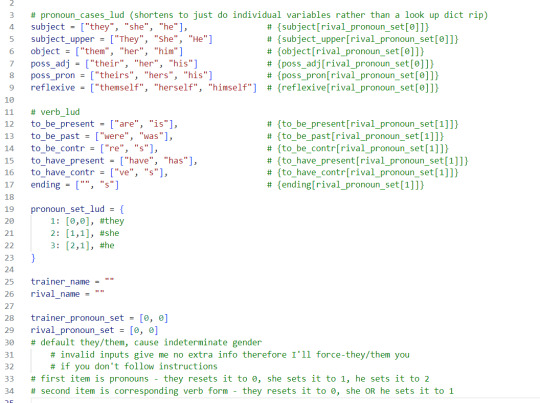
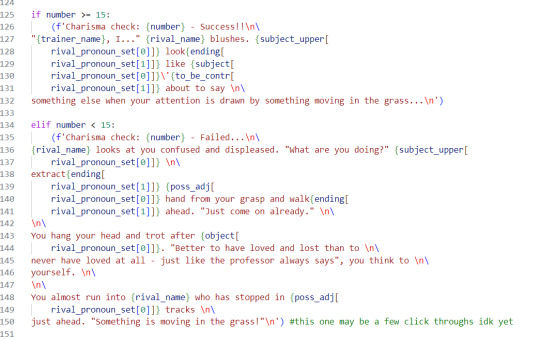
the things I do for you people and your pronouns smh
make the text strings in my CLI game code absolutely fucking unreadable apparently
#this is why I opposed singular they/them from day 1 that shit changes verbs and it is my grammatical enemy for that reason#coding#game development#command line game#mild spoilers for fun lil python project coming to the public bit of my github soon#as in idk how to make this be a application someone who can't run a python file itself on their computer could play but uhh#if you do have python on ur computer you'll be able to download and play this (I think.. I'm still pretty confused abt how github works)
3 notes
·
View notes
Text
I am a professional website developer I can build a professional website for you to expand your business visit our Website www.futurefinger.com Email Us [email protected] Whatsapp or call +918860691405 #websitedesign #website #websitedvelopmnt#websites #websitedesinger #websitelaunch #websitebuilder
#coding#software engineering#android app development#mobile application development#webdev#hire developers#app development
3 notes
·
View notes
Text
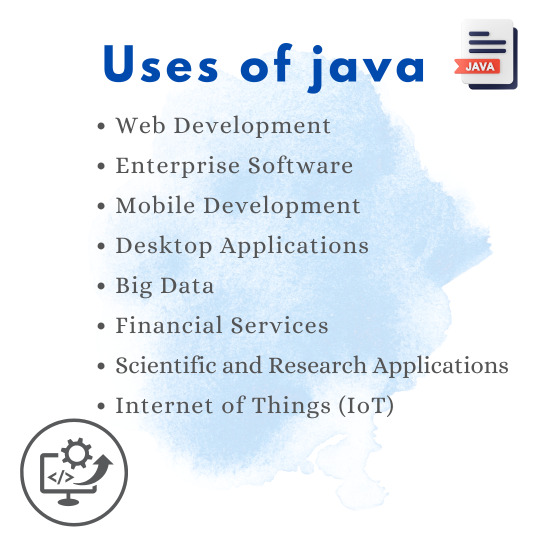
Uses of java Java is a widely used object-oriented programming language that is known for its security features. There are various uses of Java. Web Development Enterprise Software Mobile Development Desktop Applications Big Data Financial Services Scientific and Research Applications Internet of Things (IoT)
#besttraininginstitute#onlinetraining#traininginstitute#online#training#education#tutorial#coding#programming#music#java#javaprogramming#uses#javauses#jvm#use#software#applications#code#trending#technology#tech#engineering#development#softwaredevelopment
2 notes
·
View notes
Text
Another shenanigan by Amazon App store..😡
So another shenanigan by Amazon App store, I am unable to update my web app at their app store the page just refreshes and doesn't gives the option to update the app. I have to update the app as the URL of my web app has changed. I have given a email to them regarding this issue. Let's see what comes out of it

#dev rants#web developement#mobile application development#mobile app development#codeblr#coding#programmer#progblr#programming#learning to code#codetober
2 notes
·
View notes
Text
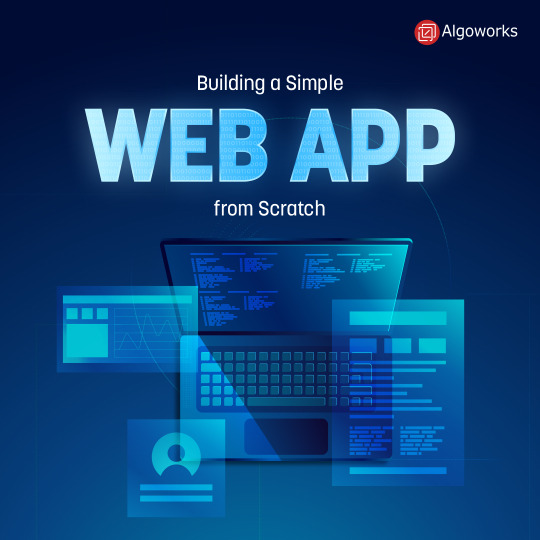


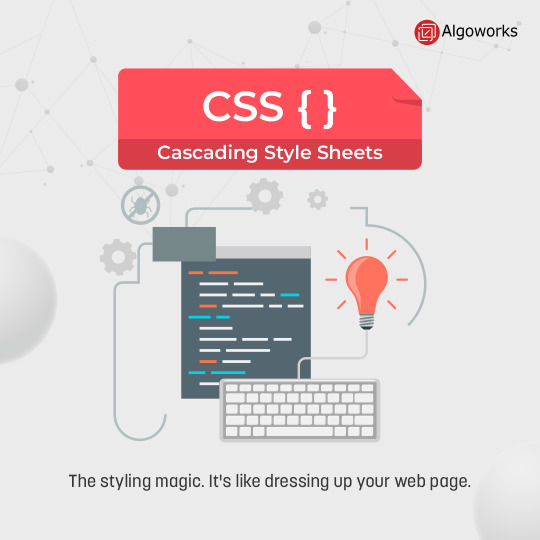
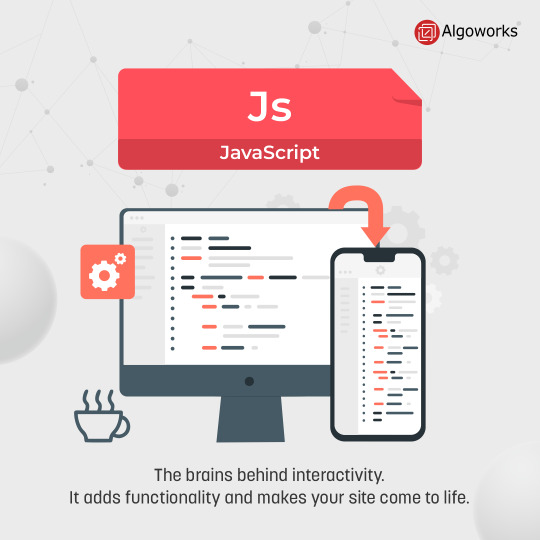

Let's harness the power trio of web development: HTML, CSS, and JavaScript to build a basic web application from scratch! 💻
✨Let the coding journey begin!
6 notes
·
View notes
Text
What Types of Applications Can Be Built Using a Low Code Platform?

The way applications are built has undergone a massive transformation in recent years. Traditionally, developing full-stack applications required extensive coding knowledge, long development cycles, and large development teams. However, with the emergence of low code platforms, businesses, entrepreneurs, and developers can now create applications faster and more efficiently than ever before. One such advanced platform that is changing the way applications are built is FAB Studio, an AI-powered low-code development platform designed to accelerate digital transformation.
What Is a Low Code Platform?
A low code platform is an application development platform that enables users to design, build, and deploy applications with minimal manual coding. Instead of writing hundreds or thousands of lines of code, developers use visual pre-built components, and simplified logic builders to create functional apps quickly. This approach allows both technical and non-technical users to build applications, making innovation accessible to everyone.
Unlike traditional software development, which often takes weeks or even months, low code platforms significantly reduce development time. They allow developers to focus more on the functionality and user experience rather than repetitive coding tasks. Platforms like FAB Studio take this further by integrating AI into the process, making application building even smarter and more precise.
How Does a Low Code Platform Work?
A low code platform combines visual development tools with automated backend logic to simplify the development process. Users can:
Connect APIs and databases without extensive code.
Leverage built-in templates and pre-built modules for faster delivery.
Generate clean and scalable code automatically through integrated code generators.
FAB Studio stands out because it is not just a typical low-code tool. It functions as a code generation platform powered by AI, which means it can automatically write structured and optimized code based on the application requirements you define. Whether you are building a simple web application or a complex enterprise-grade system, FAB Studio adapts to your needs while reducing manual effort.
What Is FAB Studio?
FAB Studio is an AI-powered low-code and no-code platform that helps businesses, product teams, and entrepreneurs rapidly develop applications without getting caught up in coding complexities. It provides:
AI Code Generator: Automatically generates structured code for UI, database, and API integration.
Code Builder: For developers who want custom logic and deeper integration.
Seamless Deployment: One-click integration and deployment capabilities.
FAB Studio eliminates repetitive coding tasks, allowing developers and businesses to focus on innovative ideas and faster go-to-market strategies.
What Types of Applications Can Be Built Using a Low Code Platform Like FAB Studio?
Low code platforms have evolved to the point where nearly any kind of application can be built using them. Here are some common and impactful examples:
1. Web Applications for Businesses
Many organizations use low code platforms to create web applications for their daily operations. Examples include internal dashboards, CRM systems, HR management tools, and inventory tracking solutions. With FAB Studio’s intelligent code generation capabilities, businesses can develop robust web apps with secure backend connections and scalable front-end frameworks quickly.
2. Mobile Applications
Building mobile apps for iOS and Android traditionally requires expertise in separate programming languages. Low code platforms like FAB Studio removes this barrier. By using pre-built mobile components and integrating APIs seamlessly, businesses can create mobile apps for e-commerce, customer engagement, field service management, or even social interaction, all from one unified platform.
3. E-Commerce Platforms
Startups and established businesses often need to launch e-commerce apps quickly to meet market demands. Low code platforms allow the rapid development of e-commerce solutions with product catalogs, secure payment gateways, and customer management features. FAB Studio’s AI code generator ensures that these applications are optimized, user-friendly, and integrated with external systems like payment services and logistics APIs.
4. Customer Portals and Self-Service Applications
Companies are increasingly investing in customer portals and self-service applications to improve customer satisfaction. These applications allow users to manage their accounts, request services, and track orders on their own. Using FAB Studio’s no code platform capabilities, even non-technical teams can create user-friendly portals with secure backend systems.
5. Data-Driven Applications
Many businesses need applications that rely on heavy data analytics and reporting. Low code platforms simplify the process of integrating multiple data sources and creating visualization dashboards. FAB Studio’s backend integrations and AI-assisted code generation make it easy to develop applications for data processing, analysis, and visualization without writing extensive custom code.
6. Workflow Automation Tools
Low code platforms are excellent for building workflow automation applications, such as employee onboarding systems, expense management apps, or approval workflows. FAB Studio’s application development platform helps organizations design automation processes with ease while integrating with other business systems through APIs.
7. Minimum Viable Products (MVPs)
For startups and entrepreneurs, quickly validating ideas through MVPs is crucial. FAB Studio empowers innovators to build fully functional MVPs rapidly, saving costs and time. Entrepreneurs can test their product ideas with real users and refine them without making huge investments in custom coding from scratch.
How FAB Studio Simplifies Application Development
FAB Studio isn’t just another low code platform; it is an end-to-end code generation platform designed to automate repetitive and complex tasks. Here’s how it stands apart:
Smart Code Builder: Generates clean, structured code for both the front-end and back-end.
Seamless Integrations: Connect external APIs, databases, and services with ease.
Real-Time Previews: Test applications instantly during development.
Enterprise-Grade Security and Scalability: Suitable for both startups and large enterprises.
Real-Life Cases of Low Code Development
Many companies have already benefited from adopting low code platforms:
Healthcare Startups: Built telemedicine platforms quickly to meet patient demands during the pandemic.
Retail Businesses: Developed inventory and point-of-sale systems without hiring large development teams.
Educational Institutions: Created e-learning platforms with student management systems and virtual classrooms.
Financial Services: Built loan processing and client onboarding applications while ensuring compliance.
These examples highlight how versatile and powerful low code platforms like FAB Studio can be in real-world scenarios.
Why Should You Choose FAB Studio?
If you are looking for a platform that saves time, reduces development complexity, and empowers teams to build efficiently, FAB Studio is the right choice. Its AI code generator and no code builder allow quick application creation for multiple industries, including healthcare, retail, education, and finance. Whether you are a seasoned developer or a business owner with no coding background, FAB Studio adapts to your needs and lets you focus on innovation rather than syntax.
Final Thoughts
The demand for applications is at an all-time high, but the traditional development approach is often time-consuming and expensive. Low code platforms like FAB Studio bridge the gap, enabling rapid application development without compromising quality or scalability. From business web apps to mobile applications, workflow automation, and data analytics solutions, there is no limit to what you can build.
By leveraging an AI-powered application development platform like FAB Studio, you can create high-quality, scalable applications faster, with reduced costs and fewer technical barriers. The future of app development is here, and it is powered by low code and AI-driven innovation.
FAQ
Frequently Asked Questions (FAQs)
1. What is a low code platform?
A low code platform is a development environment that allows building applications using minimal manual coding through drag-and-drop tools and pre-built components.
2. Can I build mobile apps using FAB Studio?
Yes, FAB Studio supports creating mobile applications for iOS and Android with seamless integration and AI-assisted code generation.
3. Is FAB Studio suitable for non-developers?
Absolutely. With its no-code builder, even users without technical expertise can build and deploy applications easily.
4. What industries can benefit from FAB Studio?
Healthcare, retail, education, finance, and startups can all use FAB Studio for rapid, cost-effective app development.
5. How does FAB Studio differ from traditional coding?
Unlike traditional coding that requires writing code from scratch, FAB Studio automates repetitive tasks and generates clean, structured code, reducing development time significantly.
#app development#code generation#fab builder#low code platform#fab studio#application development#low code app development#app developers#code generation platform
0 notes
Text
What Are the Top CrowdTwist Services Brands Are Using in 2025?

In 2025, customer loyalty has evolved beyond simple points and reward programs. Brands now rely on CrowdTwist Services to deliver personalized, omnichannel, and data-driven loyalty experiences that increase customer retention and boost brand advocacy. With digital transformation accelerating across industries, CrowdTwist has become an integral part of how brands reimagine their loyalty strategies. Let's dive into the Top CrowdTwist Services that are reshaping brand loyalty in 2025.
Personalized Loyalty Programs: Driving Deeper Engagement
Personalization has become the cornerstone of modern loyalty strategies. One of the Top CrowdTwist Services widely adopted by brands is the ability to create personalized loyalty programs based on individual customer behaviours, demographics, and preferences. These solutions allow companies to offer tailored rewards, ensuring every interaction resonates on a personal level.
For instance, a global fitness apparel brand uses CrowdTwist’s advanced segmentation tools to offer rewards that differ for marathon runners versus casual gym-goers. From birthday offers to milestone rewards, CrowdTwist Solutions are ensuring that personalization is not a buzzword—but a performance driver.
Omnichannel Customer Engagement: Unifying Experiences
Modern customers don’t stick to one channel—they engage with brands across mobile apps, social media, websites, and in-store. That’s why CrowdTwist Services in 2025 are engineered for omnichannel engagement, helping brands unify these interactions into a seamless loyalty journey.
Brands can now reward customers for a wide range of actions—writing a review, engaging on Instagram, completing a survey, or making an in-store purchase. This omnichannel functionality empowers brands to recognize and reward engagement beyond traditional purchases, creating a 360-degree customer view.
Gamified Loyalty Programs: Making Rewards Fun Again
Gamification has seen a resurgence in 2025 as brands seek to make loyalty programs more engaging. Through Top CrowdTwist Solutions, businesses can embed game mechanics like leaderboards, badges, challenges, and surprise-and-delight elements into their loyalty ecosystems.
One beverage brand saw a 37% increase in engagement after launching a gamified program that encouraged users to scan QR codes on bottles, complete quizzes, and unlock mystery rewards. These interactive experiences help brands foster emotional connections while collecting valuable behavioural data.
Tiered Rewards Programs: Encouraging Long-Term Loyalty
Another leading feature among the Top CrowdTwist Services is the ability to launch tiered loyalty programs. In 2025, tier-based models are not just about exclusivity but also about giving customers a clear path to value through progression.
CrowdTwist enables brands to design programs where users unlock higher-value rewards as they spend more or engage consistently. From free upgrades to early access to products, tiered benefits provide ongoing motivation for customers to remain active participants.
Data Analytics and Insights: Turning Loyalty into Intelligence
In the era of AI and predictive analytics, data is everything. With CrowdTwist Solutions, brands gain access to powerful data analytics tools that provide actionable insights into customer preferences, engagement patterns, and campaign performance.
Retailers use these tools to identify what offers work best for which segments, optimize reward structures, and forecast future loyalty trends. The result? Smarter marketing, better customer experiences, and a significant uptick in retention rates.
Real-Time Rewards Redemption: Instant Gratification
Consumers in 2025 expect instant results—and CrowdTwist delivers. One of the most valued CrowdTwist Services this year is real-time rewards redemption. Customers can instantly apply points to purchases, redeem them for experiences, or convert them into digital gift cards—without waiting days or jumping through hoops.
This frictionless redemption process increases the likelihood of repeat purchases and enhances the perceived value of the loyalty program.
Integration with CRM and MarTech Ecosystems
A standout among the Top CrowdTwist Solutions is the platform’s seamless integrationwith CRM, POS, and marketing automation tools. This allows brands to synchronize loyalty data across departments, improving customer profiling, retention strategies, and campaign execution.
For example, Mobcoder successfully helped an international fashion retailer implement a CrowdTwist-powered solution that integrates with Salesforce, Adobe Campaign, and Shopify. The result was a unified customer journey, measurable ROI, and significantly improved engagement metrics.
Non-Transactional Engagement Rewards
2025 has seen a shift in how brands define loyalty. Now, it’s not just about transactions—it’s about ongoing brand interaction. CrowdTwist Services allow brands to reward non-purchase behaviors like referrals, social sharing, app downloads, and even sustainability actions like recycling products or choosing eco-shipping options.
This holistic approach to loyalty ensures that even low-spending customers can feel valued and remain engaged—maximizing brand reach and advocacy.
Customizable Loyalty Dashboards for End Users
User experience matters, and CrowdTwist Solutions now offer customizable loyalty dashboards that give customers full control and transparency over their rewards journey. These dashboards let users track points, browse redemption options, view tier progress, and explore exclusive content—all from a single interface.
Providing this level of visibility boosts trust, encourages active participation, and reduces support queries—making it a win-win for brands and consumers alike.
Sustainability-Focused Loyalty Programs
Sustainability is no longer optional in 2025. Brands are now integrating eco-conscious values into their loyalty programs using Top CrowdTwist Services. This includes rewards for choosing green delivery options, purchasing eco-friendly products, or engaging in brand-led sustainability missions.
This new layer of purpose-driven loyalty helps brands connect with socially responsible consumers and contributes positively to the brand image while still driving retention.
Loyalty Program Automation and AI Optimization
AI is playing a massive role in optimizing loyalty programs. With CrowdTwist Services, brands can now automate reward triggers, personalize campaigns at scale, and even predict customer churn before it happens. Machine learning algorithms track engagement trends and adapt offers in real-time to ensure relevance and effectiveness.
This level of automation frees up marketing teams to focus on strategy while ensuring that every customer touchpoint is meaningful and timely.
Why Brands Are Choosing CrowdTwist in 2025
The ability to combine personalization, omnichannel engagement, gamification, AI, and sustainability under a single loyalty platform has made CrowdTwist the go-to choice for brands across industries in 2025. Its flexibility, scalability, and data-rich ecosystem empower companies to design programs that don’t just retain customers—but turn them into advocates.
If you want to unlock deeper customer relationships and measurable ROI, it's clear that investing in Top CrowdTwist Solutions is a strategic imperative.
#software development#software#artificial intelligence#software engineering#saas#it services#information technology#development#python#programming#machine learning#html#gamedev#devlog#coding#indiedev#linux#mobile#mobile app development#mobile app design bd#mobile application development#mobile app developers#mobileappscrapingservices
0 notes
Text
Low-Code Application Development Platform Market Forecast to Reach $64.95 Billion by 2032, Growing at a CAGR of 23.7%
Report Overview The latest research report titled Low-Code Application Development Platform Market presents a comprehensive analysis of a rapidly growing industry. The report includes a detailed study of the market share, size, growth drivers, recent developments, and top trends. Besides, a thorough analysis of the product offerings, applications, advancements, benefits and scope has been…
#Low-Code Application Development Platform Market#Low-Code Application Development Platform Market Share#Low-Code Application Development Platform Market Size#Low-Code Application Development Platform Market Trends
0 notes
Text
Transform Your Team's Potential with Visual Studio Enterprise 2022
Empowering Teams to Reach New Heights in Software Innovation
In today’s fast-paced digital landscape, delivering high-quality and scalable software solutions is more crucial than ever. Quality and Scale for Your Entire Team: Unleash Innovation with Visual Studio Enterprise 2022 offers a comprehensive suite of tools designed to elevate your development process, foster collaboration, and accelerate innovation. Whether you're a startup, a growing enterprise, or an established organization, harnessing the power of Visual Studio Enterprise 2022 can transform your team's capabilities and drive success.
At the core of Visual Studio Enterprise 2022 lies a commitment to quality. The integrated testing and debugging tools enable developers to identify and resolve issues swiftly, ensuring that the final product meets the highest standards. Features like Live Unit Testing allow real-time feedback during development, reducing bugs and enhancing code reliability. This proactive approach to quality assurance ensures your team can deliver robust applications consistently.
Scalability is another vital aspect addressed by Visual Studio Enterprise 2022. As projects grow in complexity, managing codebases efficiently becomes challenging. The platform supports scalable architecture design, microservices development, and seamless integration with cloud services, empowering teams to build and deploy applications that can handle increasing loads and user demands. This flexibility ensures your solutions remain resilient and future-proof.
Collaboration is seamlessly integrated into the Visual Studio environment. Features such as Git integration, code reviews, and team dashboards foster transparency and shared ownership among team members. The comprehensive tools enable developers, testers, and project managers to work in harmony, reducing bottlenecks and boosting productivity. When teams are aligned, innovation flows more freely, leading to faster time-to-market and more inventive solutions.
Moreover, Visual Studio Enterprise 2022 is designed to support DevOps practices, facilitating continuous integration and continuous deployment (CI/CD). Automated pipelines, containerization, and deployment tools streamline the delivery process, ensuring that updates and new features reach users promptly. This agility allows your team to respond swiftly to market changes and user feedback, maintaining a competitive edge.
The platform also emphasizes security and compliance, offering advanced security testing and code analysis features. Protecting your applications and user data is essential, and Visual Studio Enterprise 2022 provides the tools needed to uphold the highest security standards throughout the development lifecycle.
Investing in Visual Studio Enterprise 2022 means empowering your entire team to innovate without limitations. Its comprehensive features support every stage of the development process—from initial design and coding to testing, deployment, and maintenance. By leveraging these tools, you can foster a culture of continuous improvement, quality, and scalability that propels your organization forward.
Discover how Visual Studio Enterprise 2022 can revolutionize your development workflow and unleash your team’s full potential. For more insights, visit Quality and Scale for Your Entire Team: Unleash Innovation with Visual Studio Enterprise 2022.
#Visual Studio 2022#Enterprise Development Tools#Team Collaboration#Software Quality Assurance#Scalable Application Development#Innovation in Coding#DevOps Integration
0 notes
Text

QR Code Attendance Tracking System for Smarter Workforce Management
MobiWorkforce simplifies employee attendance with an efficient mobile solution powered by QR codes. With just a quick scan from a mobile device, staff can record their attendance instantly—no hardware required. Designed for flexibility, this system supports remote and in-office teams while offering HR real-time visibility and reporting. Reduce buddy punching, minimize admin tasks, and improve accuracy with our digital attendance tracking tool built for today’s dynamic workforce.
1 note
·
View note
Text
Building in Bubble but Feeling Stuck? Time for a Smarter Move
Is your Bubble development hitting a wall? Unlock powerful ways to grow, transition, or enhance your app — all without starting from zero. From migration tips to expert advice, explore smarter approaches that help you scale faster and more efficiently while keeping your existing work intact.

#AI App Builders#Android App Development#Android App Development Company#android app development services#android application development company#Bubble.io#hire Android developer#hire Android developers#ios application development service#ios apps development services#ios mobile app development company#No-Code to Full-Code
0 notes